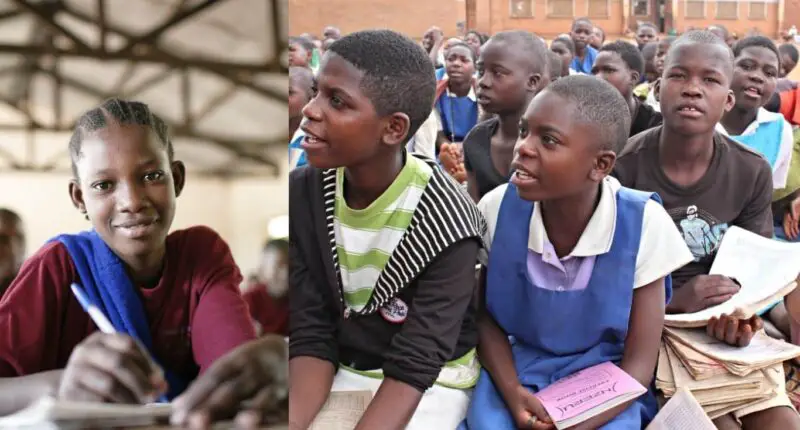Gender Inequality And Education In Third World Countries: Gender inequality and education are two issues that have a significant impact on the development of third world countries. Despite significant progress made in the last few decades, many girls in these countries still face barriers to accessing education, resulting in lower literacy rates and limited opportunities for economic and social advancement. In this article, we will explore the various factors contributing to gender inequality in education in third world countries, as well as the consequences of this inequality for individuals, communities, and societies as a whole. We will also discuss the initiatives and strategies being employed to address this issue and promote equal access to education for all, regardless of gender.
Gender Inequality And Education In Third World Countries
Gender Inequality in Third World Countries

Gender inequality remains a significant challenge in many third-world countries. Women and girls in these countries face numerous obstacles, including limited access to education and healthcare, economic opportunities, and political representation.
Gender-based violence is also pervasive, with women and girls experiencing high levels of domestic violence, sexual assault, and harassment. Harmful cultural practices, such as early marriage and female genital mutilation, also limit women’s autonomy and perpetuate gender inequality.
The lack of access to education is a key factor that perpetuates gender inequality in many third-world countries. Girls are less likely to attend school than boys, and even when they do, they often receive a lower quality of education. This limits their future employment prospects and economic empowerment. In addition, women in these countries are often excluded from decision-making processes, including political representation. This marginalization limits their ability to advocate for their rights and perpetuates gender inequality.
Reasons For Gender Inequality in Third World Countries
Gender inequality in third world countries is a complex issue with multiple contributing factors. Here are some of the reasons for this pervasive problem:

- Traditional Gender Roles: In many third world countries, gender roles are deeply ingrained in society, and women are expected to conform to specific gender roles, such as being caretakers and homemakers. This can limit women’s access to education, employment, and other opportunities.
- Lack of Education: Many girls in third world countries do not have access to education, which limits their opportunities and perpetuates the cycle of gender inequality.
- Poverty: Poverty is a major contributing factor to gender inequality in third world countries. Women and girls are often the most vulnerable to the effects of poverty, such as malnutrition, lack of healthcare, and limited access to education.
- Discriminatory Laws and Practices: In some third world countries, laws and cultural practices discriminate against women, such as denying them the right to vote, own property, or seek legal redress for gender-based violence.
- Lack of Political Power: Women in many third world countries lack political power and are underrepresented in government and decision-making positions.
- Gender-Based Violence: Gender-based violence is a widespread problem in many third world countries, which perpetuates gender inequality and limits women’s opportunities.
- Limited Access to Healthcare: Women in third world countries often have limited access to healthcare, which affects their well-being and perpetuates gender inequality.
The Current State of Education in Third World Countries
Education in third world countries has long been a challenge due to various factors. One of the primary challenges is limited access. Many children in third world countries do not have access to basic education due to poverty, conflict, or other factors. This hinders their opportunities for personal and economic growth. In addition, even when education is available, the quality may be poor due to lack of funding, poor infrastructure, or insufficient teacher training. This creates a learning environment that does not support students in achieving their full potential.
Gender inequality is another issue that affects education in third world countries. Girls are less likely to attend school than boys due to cultural and societal factors, such as early marriage and traditional gender roles. This leaves a large portion of the population without access to education and limits their ability to pursue opportunities outside of their traditional roles.

Language barriers also contribute to the current state of education in third world countries. Many students in these countries may not speak the language of instruction, making it difficult for them to learn and succeed in school. This can further exacerbate existing educational inequalities and limit the opportunities available to students.
Lack of resources is another major challenge facing education in third world countries. Schools in these countries often lack basic resources, such as textbooks, technology, and adequate facilities, which can hinder learning and teaching. Moreover, inadequate funding is a critical issue. Many third world countries allocate insufficient funds to education, limiting the resources and support available for teachers and students.
Despite these challenges, there have been efforts to improve education in third world countries. Initiatives such as increasing access, providing teacher training, and investing in infrastructure and resources have been implemented. However, progress remains slow and uneven, and much work still needs to be done to ensure that all children have access to quality education. Education is vital to the development and growth of individuals, communities, and nations, and addressing these challenges is crucial to achieving a better future for all.
How is Gender Inequality Directly Proportional to Poor Education
Gender inequality and poor education are closely intertwined in a vicious cycle, where one feeds into the other. Gender inequality can limit access to education for girls and women, and poor education can perpetuate gender inequality.
One way in which gender inequality is directly proportional to poor education is through limited access to education. In many third world countries, girls and women face cultural and societal barriers to accessing education. Traditional gender roles may limit their opportunities to attend school, as they may be expected to prioritize domestic duties over education. This lack of access to education can perpetuate gender inequality, as women and girls are denied the opportunity to develop their skills, pursue career opportunities, and contribute to society in meaningful ways.

Another way in which gender inequality is directly proportional to poor education is through the quality of education. In many third world countries, girls and women receive a lower quality of education than boys and men. This can be due to factors such as inadequate resources and teacher training, which are exacerbated by gender inequality. Girls and women may receive less investment in their education than boys and men, leading to lower-quality education and perpetuating gender inequality.
Poor education can also perpetuate gender inequality by limiting economic opportunities for girls and women. In many third world countries, education is closely linked to economic opportunities, as those who receive higher education are more likely to secure well-paying jobs. Without access to education or high-quality education, girls and women may be limited to low-paying jobs, further perpetuating gender inequality.
In conclusion we can say that gender inequality and poor education are closely linked in a vicious cycle that perpetuates both problems. Addressing gender inequality is crucial to improving access to education for girls and women, and improving education is crucial to breaking down gender barriers and promoting gender equality.
Ways To Overcome Gender Inequality and Poor Education
Addressing gender inequality and poor education requires a comprehensive approach that involves various stakeholders, including governments, non-governmental organizations, educators, and communities. Here are some ways to overcome gender inequality and poor education:

- Increase access to education: Governments and NGOs can work together to increase access to education for girls and women, particularly in areas where cultural and societal barriers exist. Strategies such as building schools closer to communities and providing scholarships to girls can help increase access to education.
- Improve the quality of education: Providing adequate resources, infrastructure, and teacher training can help improve the quality of education for girls and women. This can involve increasing investment in education and providing incentives to teachers who are willing to work in rural or remote areas.
- Address gender biases: Educators and communities can work together to address gender biases in education. This can involve challenging traditional gender roles and stereotypes that perpetuate gender inequality, and creating more gender-inclusive curricula that reflect the experiences of girls and women.
- Provide mentorship and role models: Providing mentorship and role models for girls and women can help inspire them to pursue education and break down gender barriers. Women who have achieved success in education or their careers can serve as role models and mentors for young girls and women.
- Involve families and communities: Engaging families and communities in promoting education for girls and women can help overcome cultural and societal barriers. This can involve educating families on the benefits of education for girls and women and creating community-based programs that support education for girls.
- Provide access to technology: Providing access to technology can help overcome barriers to education, particularly for girls and women in rural or remote areas. Technology can be used to provide online education and training, as well as to connect girls and women with mentors and role models from around the world.
Overcoming gender inequality and poor education requires a multi-faceted approach that involves increasing access to education, improving the quality of education, addressing gender biases, providing mentorship and role models, involving families and communities, and providing access to technology. By working together, we can create a more inclusive and equitable education system that benefits all.
Also Read: Need for Mental Health Support in Education



